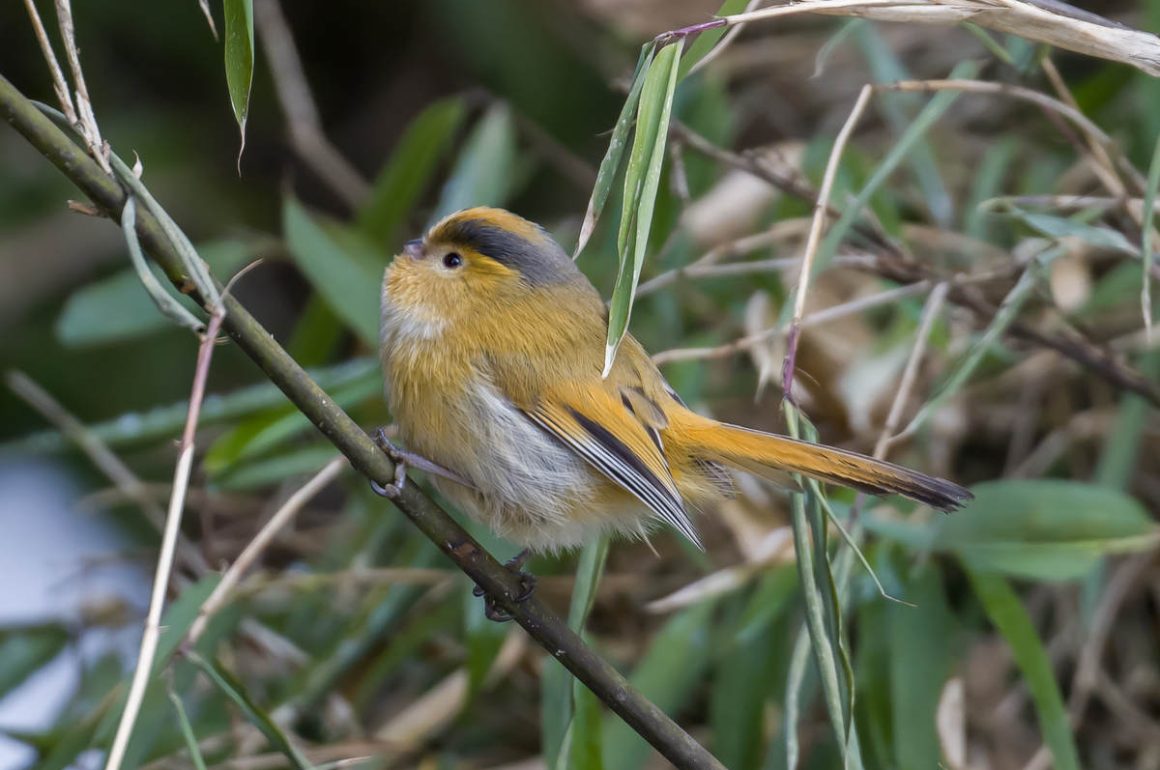
Wawushan is a weird kind of mountain – it is almost flat at the top. In fact, it is the world’s second-largest table mountain with a maximum altitude of 3,522 meters.
In many ways, birding Wawushan is a nightmare for a solitary and crowd-hating birder like me. It is a Chinese tourist place – the crowds are not huge by Chinese standards (there are probably twenty times as many tourists at nearby Emei Shan at the same time), but there is no way of escaping them. An unnamed bird guide called them “avoidless tourists”, which sums it up rather nicely. Most of them had brought kids along as well (probably among my least favorite mammals), which were pulled on gaudily colored skiing sleds by their hapless parents, creating a constant raucous noise.
Add to this that during the whole about 4 km walkway on top of the mountain, there were constant loudspeaker messages warning of the dangers of slipping on the icy path, and the first (and second and third) impressions of Wawushan were decidedly unfavorable.
Fortunately, safety seemed to be a priority at Wawushan. So, for example, there was ample warning of the danger of snow.

Elsewhere, ongoing construction cast some doubts about the future of the place.

A pity, as overall the habitat looked rather good (I have learned that to pose as an experienced birder, it helps to frequently comment on presumed habitat quality).

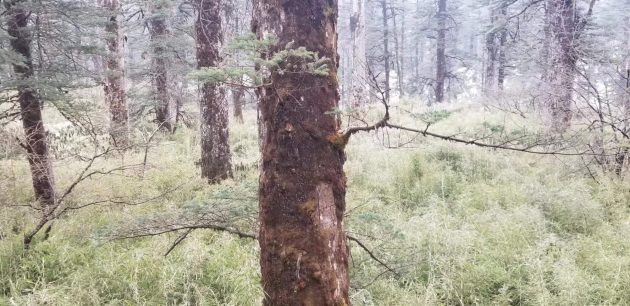
So, all this makes birding this place an occasionally less than pleasant experience. However, it is still worth it, if only for the parrotbills, four of which I encountered here within a few hours.
A few general words about parrotbills to fulfill my educational duty towards you, the valued reader. The family has about 37 species, but that includes several fulvettas – only 21 of the species have “parrotbill” in their names (and frankly, the bills of fulvettas do not look like those of parrots at all).
In the past, when trying to uncover the evolutionary relationship of parrotbills, Bearded Reedlings were used as study objects, as apparently this species is easier to get hold of (source). The disadvantage is that this is not a typical parrotbill at all – it is a bit like the old joke of searching for your keys not where you lost them, but where there is plenty of light to facilitate the research.
The Wikipedia entry on parrotbills has a long section on their struggle to avoid being parasitized by cuckoos. One interesting paper argues that contrary to what might seem logical, cuckoos do not aim to lay eggs specifically into the nests of those parrotbills whose egg color and pattern match their own. The rationale includes the speed of the laying (too fast to check for color matches) and the low number of egg-laying attempts (i.e., it is rare that a female cuckoo decides not to deposit an egg, which should be frequent if egg matching was an important aspect). The paper concludes that “cuckoo egg laying, based on the appearance of their own eggs, is maladaptive for host selection”. (I like the word “maladaptive” and will try to sneak it into my everyday conversation in the future – even if only talking to my cats. “Stop biting me, Wolfie – this is maladaptive behavior!”).
So, 4 species of parrotbill here, presumably also vocalizing, though this cannot be heard due to the loud noise of the plastic sleds grinding over ice and sand, and loud parents with their louder children.
My favorite here was the Fulvous Parrotbill, one of the smaller and more colorful parrotbills. It was an amazing sight to have a flock of about 50 of them flying directly toward me, though eventually skillfully avoiding me to reach the other side of the road, like an army of highly sophisticated, fast, and colorful drones.
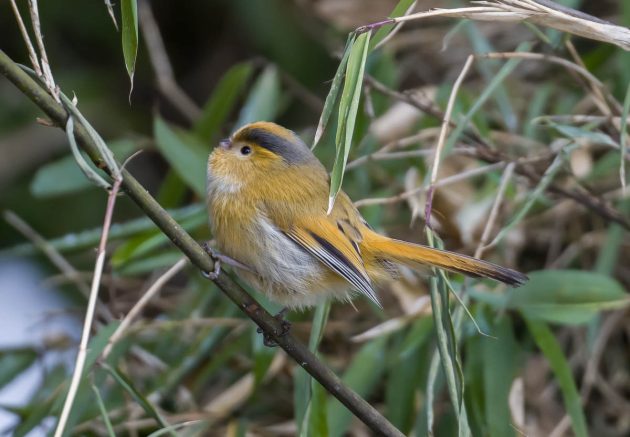
A paper on breeding of the species was actually researched right here at Wawushan. Unfortunately, their overall nesting success was only 18%. The authors speculate that “human disturbance (i.e. tourist hiking on paths close to nest sites) might prompt nest desertion causing the low reproductive success of fulvous parrotbill in the reserve”.
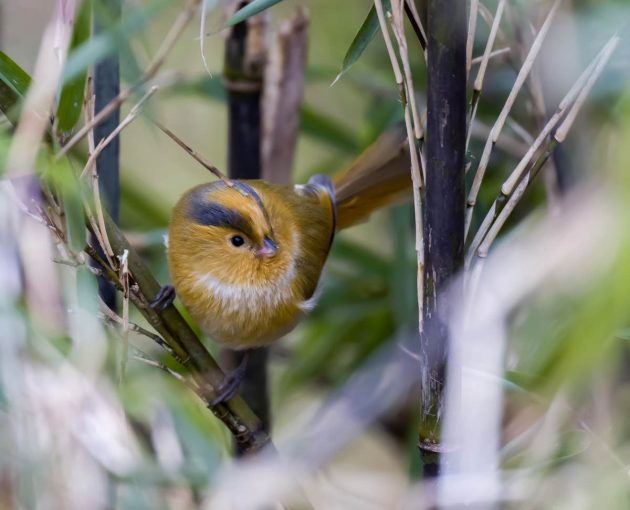
My guess is that there were far fewer tourists in 2014, when the paper was researched, than in 2023 …
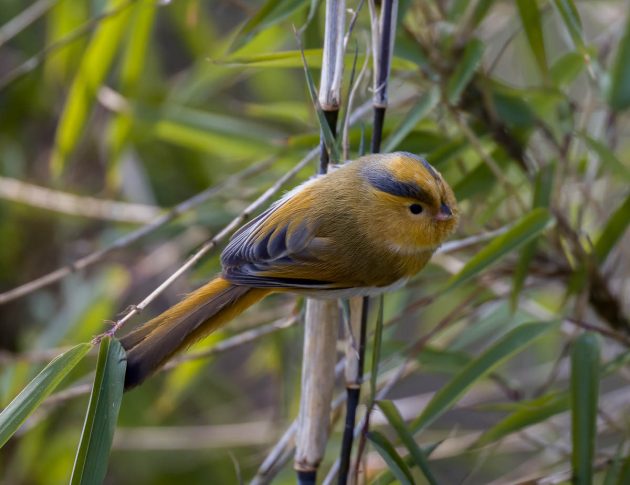
According to the HBW, the Brown Parrotbill differs from the very similar Three-toed Parrotbill “mainly in having darker crown, forehead not noticeably paler, blacker supercilium (particularly behind eye), darker and warmer upperparts, warmer-looking wings, browner tail, darker-looking head side with more contrasting pinkish-silver streaks or mottling, paler throat, greyer and paler underparts”. That is the kind of detailed description I personally find more confusing than helpful, revealing my limitations as a birder. More memorably, and more helpful to me, Bella from Alpinebirding (my guide at Wawushan) told me that the Brown Parrotbill looks more aggressive to her.
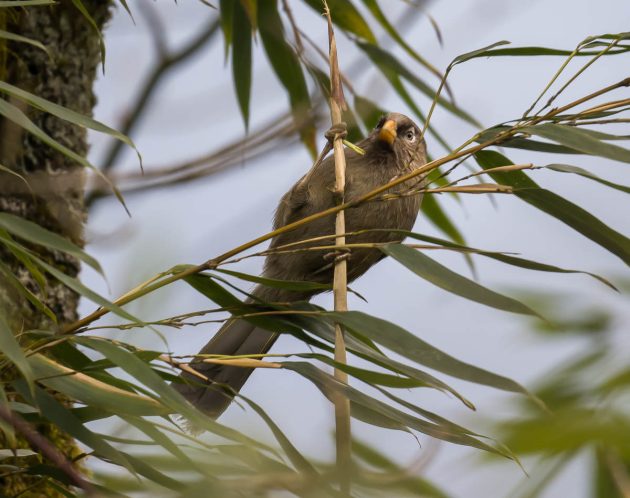
Some Chinese researchers found one (1) nest of a Brown Parrotbill at Gaoligongshan and wrote a paper on it. Efficient use of the limited resource parrotbill nests, I guess.
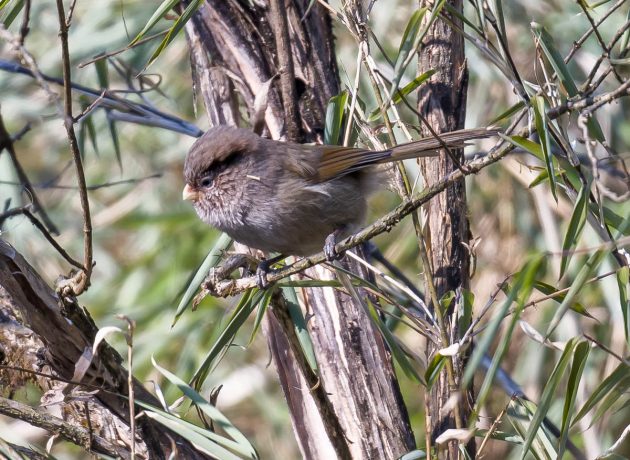
The Three-toed Parrotbill is the only passerine with only three toes, according to the HBW.
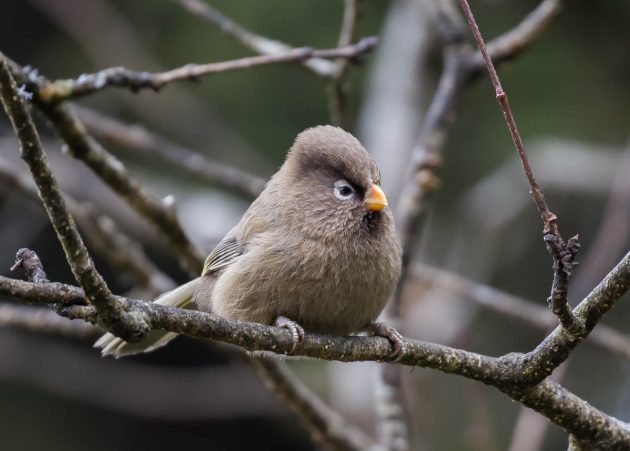
Sometimes, at parrotbill family conventions, an uncle from this species shocks the chicks of other parrotbill species by showing them his feet. Never fails to startle them.
“See, only three!”
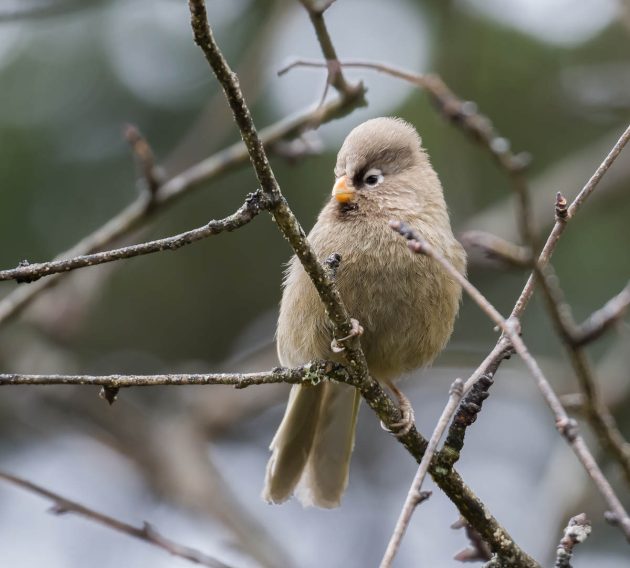
Once they have recovered from their initial surprise, the uncle explains to them that his Latin species name paradoxus (“strange, incredible, extraordinary”) is probably also derived from this peculiarity.
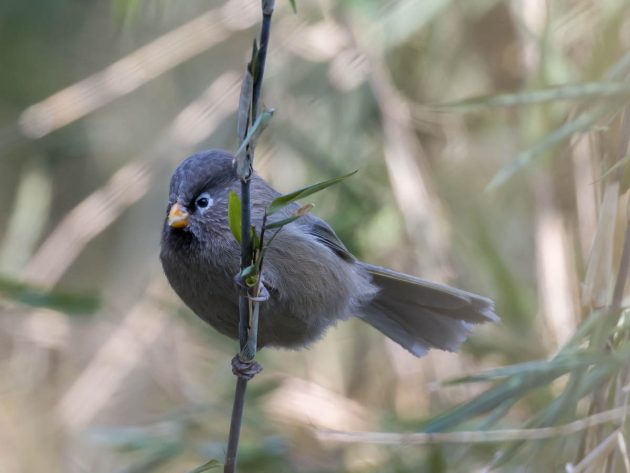
The Great Parrotbill recently unsuccessfully petitioned to be renamed to Giant Parrotbill, citing the panda example as proof of the benefits of having this name. However, it was pointed out to the bird that the popularity of the Giant Panda is based more on its similarity to plush toys, its relative rarity, and its remarked incapability to lead a healthy sex life than on its specific name.
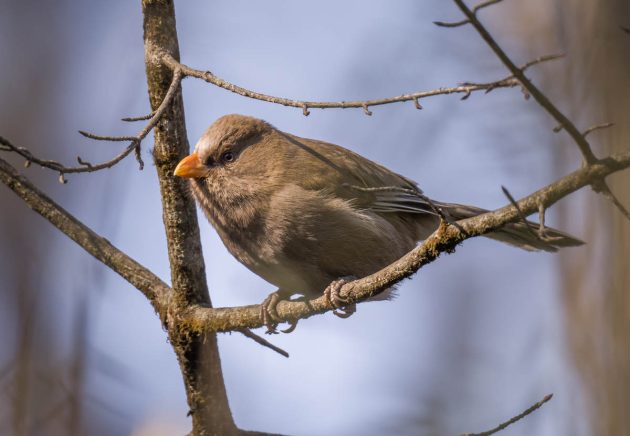
It might more sense to ask for its Latin species name to be changed – “Conostoma aemodium” to me sounds like an illness or treatment for a digestion problem, though in reality aemodium is not a diarrhea treatment but means “of the Himalayas”. Still, I could understand a bird being concerned about the association.
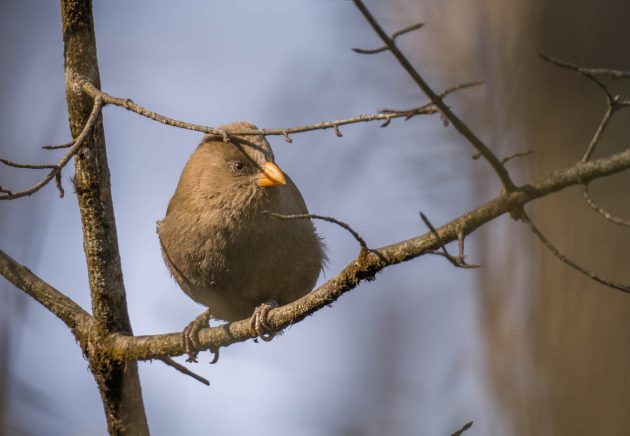
In 1980, an American without a high school degree was 2.6 times more likely to be married within his or her own group than random matching would predict. By 2013, this ratio had increased to 7.2 (source). Paraphrasing from this source, as a consequence of this stronger assortative mating at the bottom of the educational distribution, more children are born into families where both parents are negatively selected in terms of human capital, which may in turn result in increased inequality. In Elliot’s Laughingthrush, assortative mating is also observed.
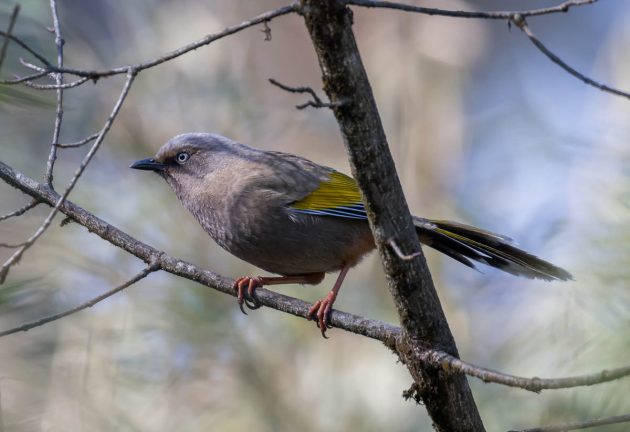
Indeed, positive assortative mating, based on culmen length, tarsus length, and body mass, was found across breeding pairs.
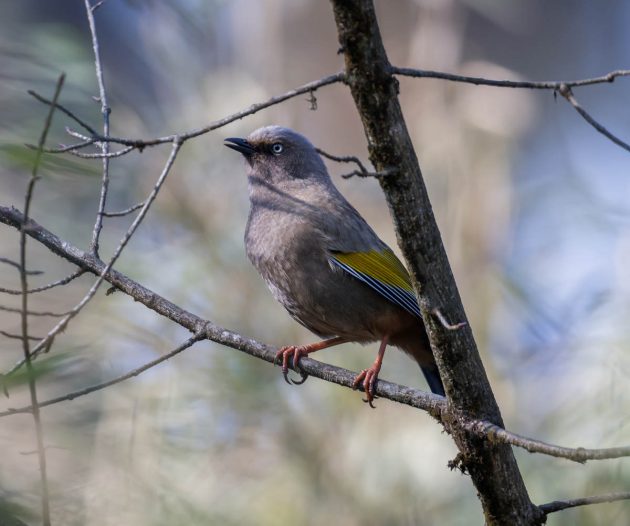
Or in other words, “The rich get richer and the poor get poorer” (Shelley), or whatever the equivalent of wealth is in avian terms (you can tell I have written about Elliot’s Laughingthrush before and am running out of interesting things to say about the species).
Hemoglobin is a key molecule in transporting oxygen from the lungs to the individual cells requiring it for their metabolism. Interestingly (particularly for a chemist like me), there are differences within the hemoglobin of the same bird species depending on whether the species lives at high or low altitudes. Specifically, Grey-crested Tits living at high altitudes were shown to have a more efficient hemoglobin variant (source).
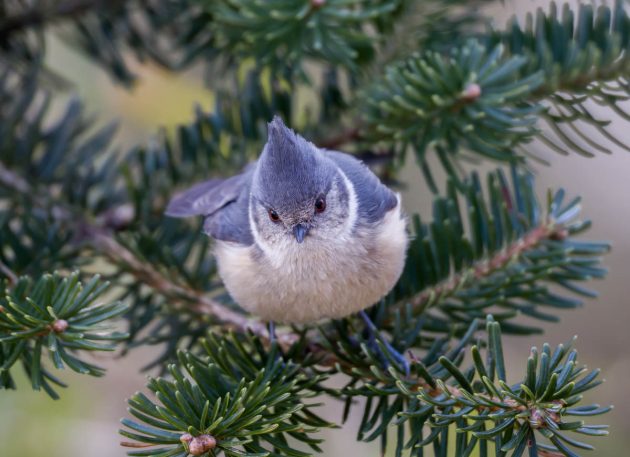
At Wawushans 3500 meters of altitude, you better use good hemoglobin.
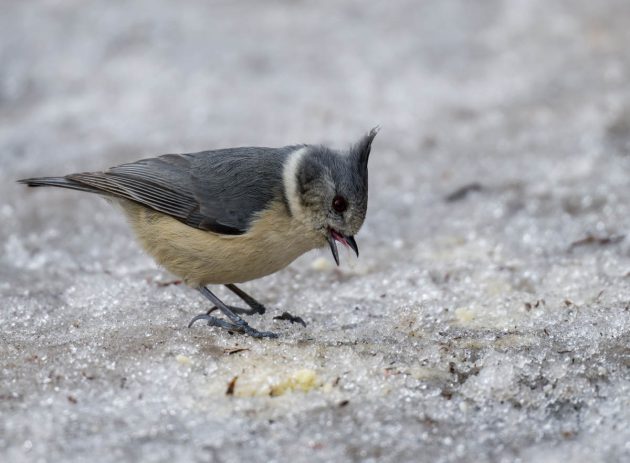
The beautiful red eyes of the species are also worth mentioning, I think …
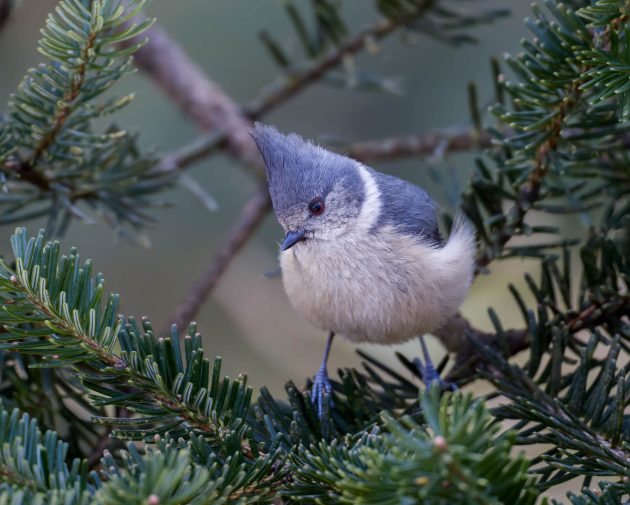
The person who came up with the Latin species name apparently did so after a long day of tedious work, thus lacking any inspiration or specificity. This resulted in “dichrous“, or two-colored.
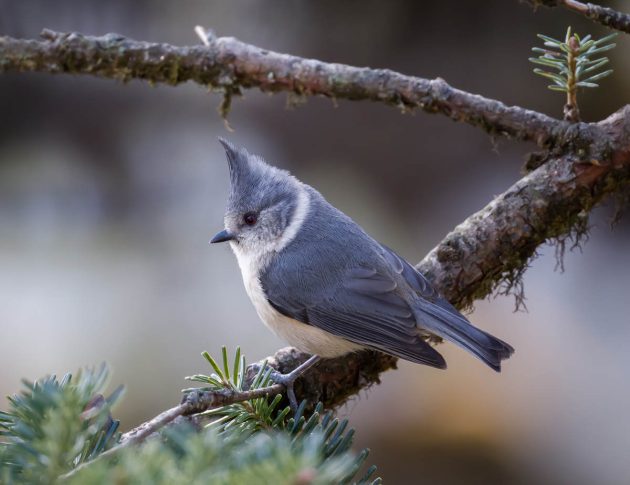
And of course, there were numerous Rufous-vented Tits. However, as the first part of the species name makes it harder to crack bad semi-pornographic jokes, I will not further comment on this bird in this post.
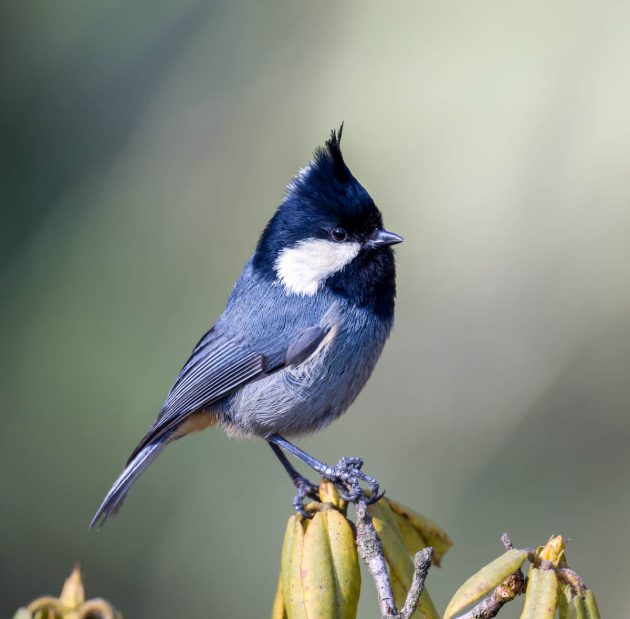
That leaves the Grey-hooded Fulvetta, a bird that to me looks much more attractive than the name or the eBird description (“small brown bird with a bulbous gray head and staring white eyes”) suggests.
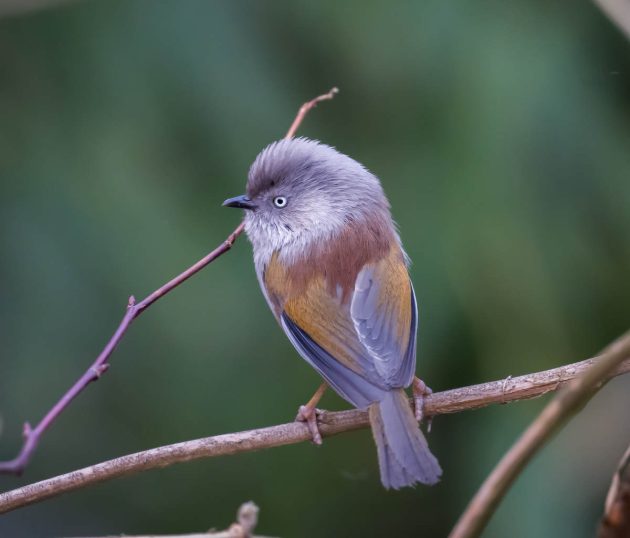
Actually, the HBW description is even less appealing: “Small brownish, plain-headed and nondescript fulvetta”, again leading me to believe that some of the HBW contributors might be happier switching to other jobs that are less focused on birds.
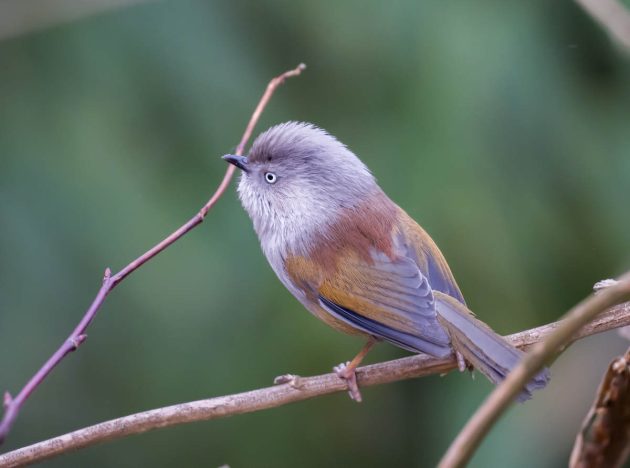
Non-intuitively (at least to me), the Grey-hooded Fulvetta is also a member of the parrotbill family, the Paradoxornithidae. At least until the next reorganization of the avian family tree.
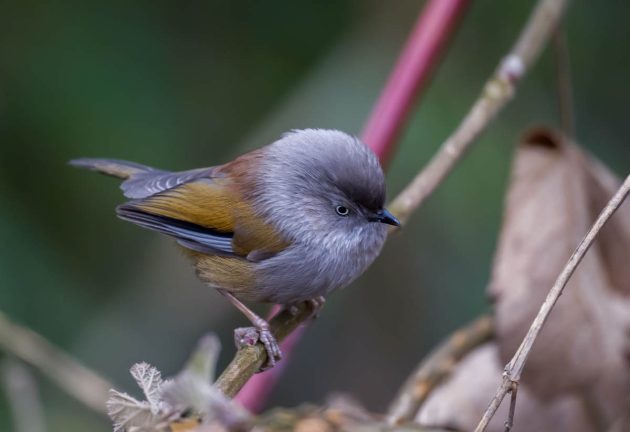
While Giant Pandas are celebrated in today’s China, this was not always the case. In pre-communist China, Giant Pandas were considered the aristocrats among Chinese mammals. Predictably, that got them into trouble during the cultural revolution – they were denounced as belonging to the “Five Black Categories” (though it was never exactly clarified to which of the five undesirable categories they belonged to – the landlords, rich farmers, counter-revolutionaries, bad influencers or right-wingers). Many Giant Pandas were sent to the countryside for reeducation. And for many of them, it worked- they rehabilitated themselves, adapted, and gave up some of their grandiose postures and lazy lifestyle as well as their aristocratic black-and-white appearance. To indicate and acknowledge these changes, these pandas were henceforth given the honorary new name “Red Panda”.
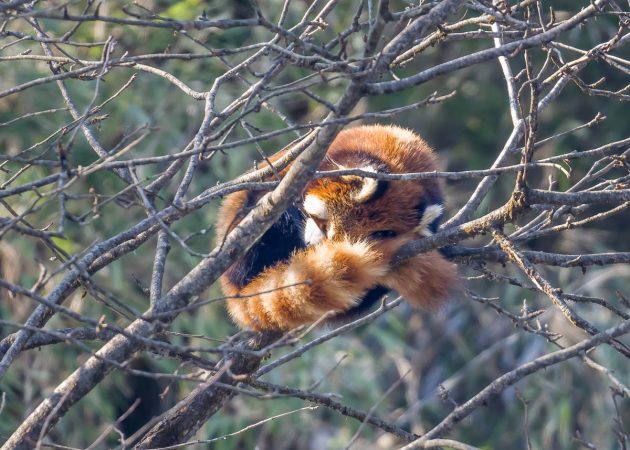
Of course, now that China has changed and Giant Pandas are back in fashion and even celebrated, some Red Pandas regret their transformation. They now have to find their own food while many Giant Pandas lead a luxurious life, being fed carefully chosen bamboo and watching panda porn all day.











An entertaining read and great photos. I am inspired to visit but discouraged by the tourists…
Indeed it is a tough call. Overall, I think it is still worth going, though to be honest, I would not have enjoyed to go there again the next day.